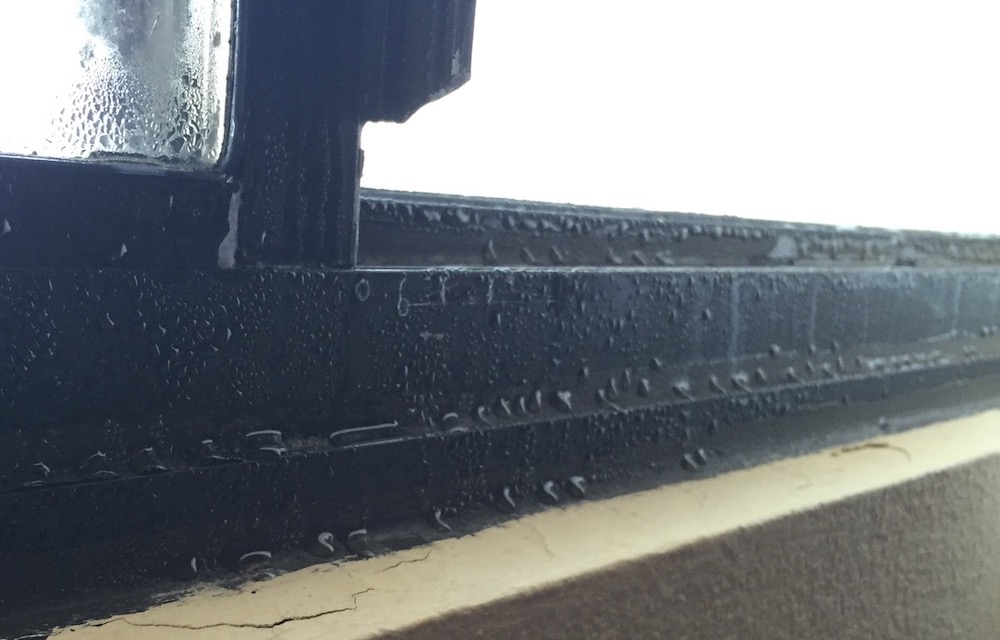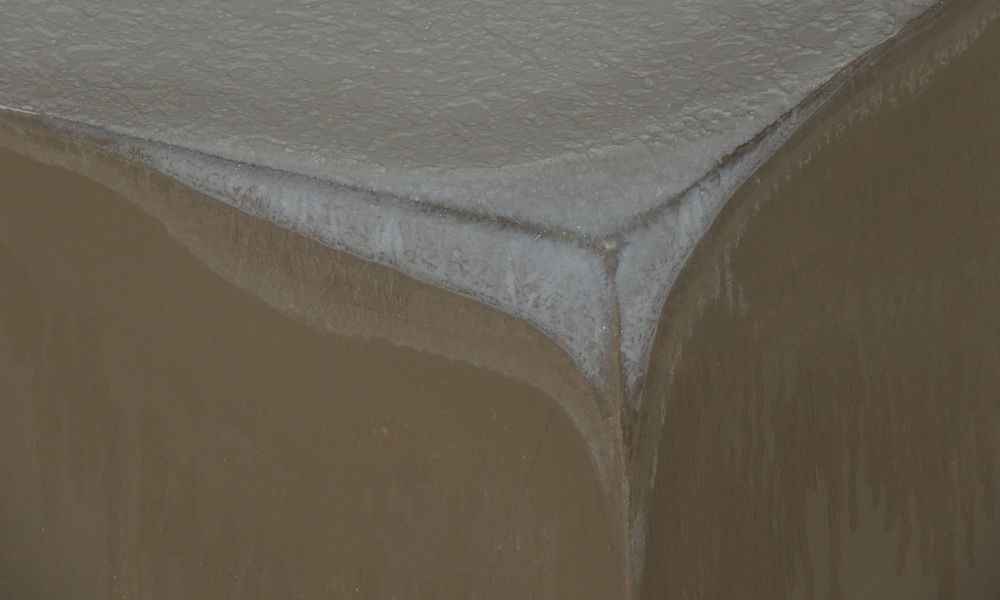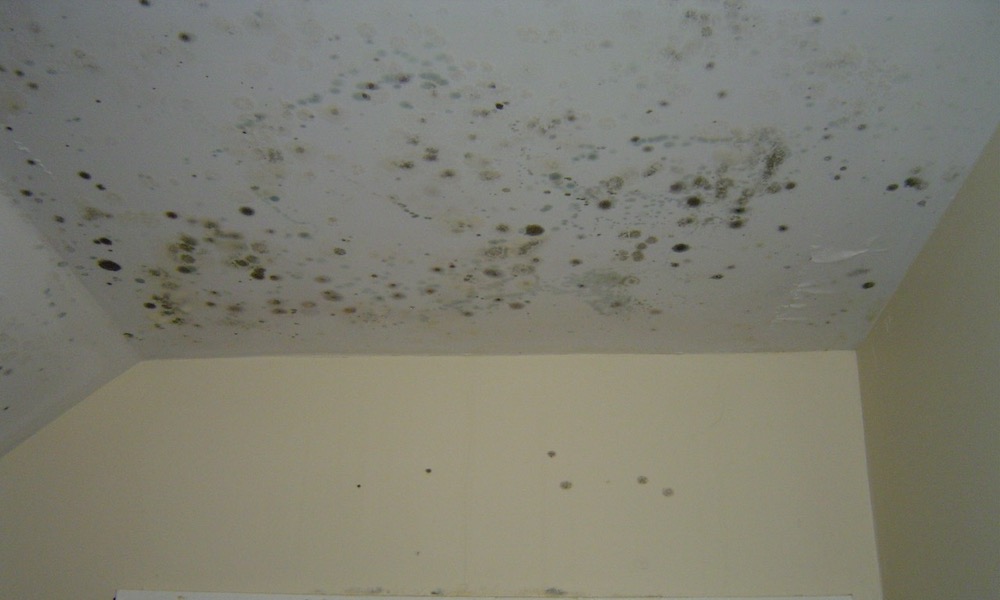Can Cold Surfaces Wring Moisture From Dry Air?

Cold air is dry air, right? Think about the humidity in your house in winter compared to what it is in summer. If you’re in a humid climate, it’s going to be drier in winter. Even in dry climates, it’s probably drier in winter. That’s because less water evaporates when it’s cold.* Of course, you already know that because adding heat is the way we dry things, right? Think blow dryers and clothes dryers.
A conundrum
But doesn’t that leave us with a conundrum? Why would condensation (or moisture absorption in porous materials) happen if the air is dry?
The answer is pretty easy to grasp. It’s the same reason behind cold air still having enough heat in it to heat your home in winter when you use a heat pump. “Dry air” is a relative term. It doesn’t mean there’s no more water vapor in the air. It just means that there’s less water vapor.
Moisture magnets
The key to wringing liquid water out of dry air is to use a magnet. No, not that kind of magnet. I’m talking about a moisture magnet. And that would be a cold surface.
Look at the lead photo above. I took that photo on a chilly winter day. The relative humidity in my hotel room was about 40 percent. The indoor temperature was 70 °F. Using the psychrometric chart or an app that does the calculations, you can find that the dew point temperature for those conditions is about 45 °F.
What does that tell us? If the air in that room finds any surface with a temperature lower than 45 °F, water vapor from the air will start condensing on the surface. And the lower the temperature of the surface, the more condensation you’ll see.
In the case of that photo above, the metal-framed window becomes a magnet because it gets very cold. Heat flows right through it, making the temperature of that metal drop as the outdoor temperature drops. When it’s 30 °F outdoors, that interior metal surface easily will be below the dew point temperature of 45 °F.
Indoor air quality impacts
Windows are often the worst thermal performers in a building enclosure, so condensation there isn’t too surprising. In cold climates, it might even be frost. But where else might you have moisture magnets in your house?

Ceilings are one place where this can occur. Because of a poor insulation job or wind washing, the drywall on a ceiling could easily drop below the dew point temperature. The photo above shows frost at the edges and liquid water running down the walls because of cold, windy weather and lots of wind-washing through and beneath the attic insulation. (See article about that house for more details.)

If you don’t address a moisture magnet like that, you may end up with a serious microbial infestation. Yeah, I’m talking about mold. And that can affect your indoor air quality, which can affect your health. It also can affect your ability to sell the house.
Moisture problems like this also can occur in unheated rooms, which is one reason not to close vents in unused rooms. Poor circulation of heated air can keep surfaces cool enough to attract moisture and grow mold, too. Check behind your furniture and in closets, especially on exterior walls.
The sum and substance
Dry air still has plenty of water vapor in it. That water vapor can turn into liquid water (or adsorbed water; see chapter 6 of my book) when it finds cold surfaces. This can happen because of weak areas in the building enclosure, like metal-framed windows without a thermal break or wind-washed attic insulation.
There you have it. So-called dry air can cause moisture and indoor air quality problems. If you’re already at the low end of where you want your indoor relative humidity, the only solution is to warm those surfaces that are below the dew point temperature.
Allison A. Bailes III, PhD is a speaker, writer, building science consultant, and the founder of Energy Vanguard in Decatur, Georgia. He has a doctorate in physics and is the author of a popular book on building science. He also writes the Energy Vanguard Blog. You can follow him on Twitter at @EnergyVanguard.
* Many people say it’s because the air can’t hold as much water when it’s cold, but the air really has nothing to do with it. I explained that in a previous article.
Related Articles
Humidity, Health, and the Sterling Chart
What Is the Best Indoor Relative Humidity in Winter?
Comments are moderated. Your comment will not appear below until approved.
This Post Has 11 Comments
Comments are closed.

Fascinating, thank you!
Thanks, Alex! Glad you liked it.
Great article. Just sent it to my son to explain why his big bean bag type chair on our cold floor ( concrete slab ) and up against his wall will have moisture under it in the winter.
This reminds me of my steel front door this past Christmas when the temperature got down to zero and it started frosting on the inside. Does anyone make a front door that is well-insulated, air-tight, and good-looking? Why do my cars have better doors than my house?
Two great questions, Roy. The Passive House community has good doors because they require it. Unfortunately, I think they’re still pretty expensive.
We have a fiberglass Therma Tru with foam that’s performed pretty well. Just checked its temperature. Room temp 67-68F, wall surface 65-66F, door surface 63-64F, except right at the edge I get around 59F. It’s 22F outside.
I have an issue with mold on the inside wall of a small closet on my second floor. The closet is right next to the bathroom and the ductwork is behind the wall. Any ideas on how I can remedy this? The house is in St. Louis so we have quite a bit of humidity in the summer.
Bill: How far are you willing to go? That duct in the wall is probably an uninsulated supply duct. The drywall in the closet gets cold enough to accumulate moisture and grow mold in summer. One solution would be to open the wall and insulate the duct. You may need to expand the space for the duct by stealing space from the closet.
Barring that, you try to get some air flow into the closet. A small muffin fan might be enough if you have a decent undercut on the door. Ideally you’d place the fan high and on the back side of the closet, but putting it above he door could work, too.
You could also put a small dehumidifier in the closet.
This has me wondering about where to place the intake for a (heat-exchange) ventilation system – I’m thinking that air on the cool side of the house should have a lower dew point, and therefore be preferable to use. It would also make sense to ventilate more during the night when the air is drier (in absolute terms). Climate here is a cool/temperate but generally damp marine climate.
At present the house tends to grow mould on the aluminium window frames and on curtains in poorly-ventilated bedrooms, and it’s very hard to heat the house without the indoor dew point becoming undesirably high in terms of condensation. The frames are not thermally broken and are often only a couple of K above the OAT. And the curtains can be their own worst enemy, as their insulative property causes it to be colder on the window side in winter, leading to increased RH, as they’re exposed to the same dew point conditions as the rest of the indoor air.
I always got a chuckle out of Joe Lstiburek’s jocular euphemism for condensation: “accidental dehumidification”!
A dew point calculator such as http://www.dpcalc.org/ is super-handy for figuring out target indoor dew points. For example, if the inside of my window frames are at 7℃, I’d need to maintain an indoor dew point of 4℃ or less to avoid mould. In a continental winter that might be no big deal, but on the coast it’s quite a challenge!
Chris: There are also good apps for smartphones that do all the psychrometric calculations, too. I mostly use the Munters PsychroApp.
I remember when I read the paper (“Unplanned Airflows and Moisture Problems”) where Lstiburek and Terry Brennan first mentioned accidental dehumidification and thinking how brilliant that was. I put the link to the paper at the bottom of my article on that topic:
Accidental Dehumidification – A Preventable Mess